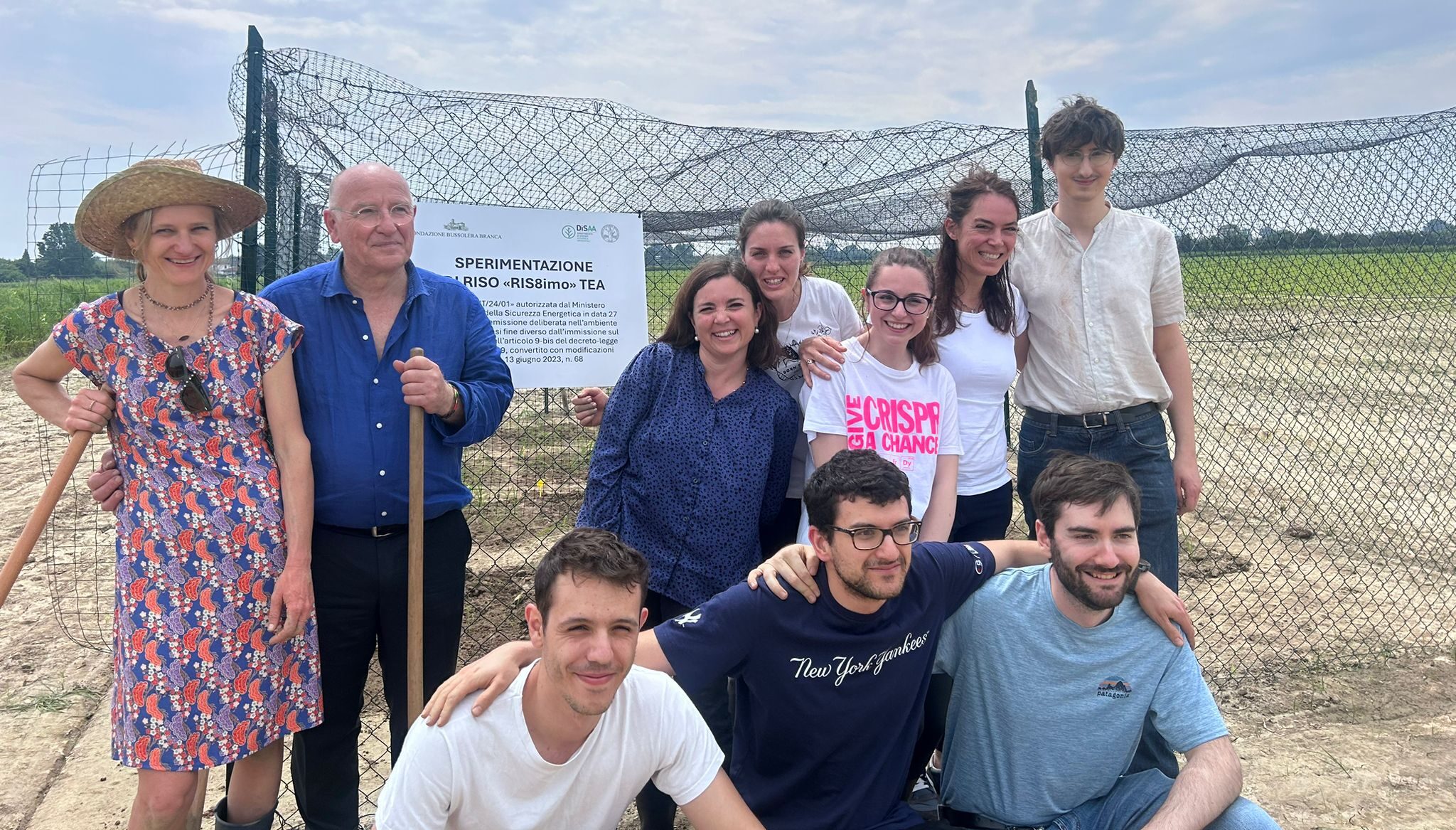
GMOs have had a major image problem for years. While it’s easy to point the finger at anti-GM activists, three experts say our own industry is often largely to blame.
A 2018 survey by the American Marketing Association found that consumers feel genetically modified (GM) foods are unnatural, immoral and unsafe, despite some 70% of processed foods in Canada and the United States already containing them.
A 2018 Chinese study found that nearly half of people surveyed had a negative impression of GM foods.
The European Commission has implemented strict GMO labeling laws.
A study from March of this year published in the Journal of Agriculture and Food Research found over half of the Canadian consumers surveyed say they are worried about GM foods.
Clearly, these foods have an image problem. But why, and what can be done about it?

To understand where the negative impressions consumers have come from, we have to go back in history, says Andreas Boecker, associate professor with the Department of Food, Agricultural and Resource Economics at the University of Guelph.
The first GMOs came to market in the 1990s, he notes — around the same time the Bovine spongiform encephalopathy (BSE/mad cow disease) scare occurred in Europe. At the time, Boecker was completing his PhD in agricultural economics in Germany.
“BSE created a total breakdown of trust among European consumers. It was perceived as a conspiracy between industry and government, where consumer interest and consumer safety were put at the very end of the priority list. Up to that point, GMOs were a non-issue in the public consciousness,” Boecker says.
To those who were active in lobbying against GM technology, the BSE outbreak was a vehicle for sowing mistrust among the public, he says. At the same time, the two main companies offering these GM products — Monsanto and Syngenta — had never had to deal with consumer concerns of this nature.
“They did not do a very good job in addressing the matter. As a consequence, there was also quite a bit of resistance not just among consumers but among farmers as well to even try these products. From this point onwards, the so-called unknown long-term health risks — which are present with any new technology — are the primary reason most consumers give when they are asked why they have a negative impression of GMOs.”
Add to that the fact that most GMOs on the market have no direct observable benefit to consumers, he says, and you have a general public that is wary, or else simply apathetic, about GM technology on their dinner plate.
“It is evident from the research that the potential benefits of GMOs are not known to the general public, and there’s a very simple reason for that — the first generation of GMOs do not have a tangible benefit for the consumer. Instead, they are beneficial primarily to farmers by making their job easier and boosting yields. Also, the companies selling these products obviously benefit from a profit perspective. That further fuels public mistrust and a feeling among many consumers that they are being fed something that at the very least is of no benefit to them, if not potentially harmful in some way.”
Power Dynamics

For Kavin Senapathy, the problem runs even deeper. Based in Madison, Wisc., Senapathy is a freelance journalist and co-founder of SciMoms.com, a non-profit educational organization which aims to promote evidence-based parenting and policy.
She says negative consumer impressions of GM foods are not just rooted in fear of the technology itself, but business practices surrounding it and the many harms that can result from those practices.
Senapathy was once a prominent voice of the pro-GMO movement. For years, she went to bat for GM technology in pieces published by outlets like Forbes.
“Rampant anti-GMO misinformation exploited the fear of parents, often in misogynistic ways that targeted women and other people assigned female at birth. And so, as someone who cared about science and justice, GMOs weren’t only safe, but the precise transfer of desired traits seemed elegant,” she says.
Things started to change for her in the mid-2010s, when she says she started paying attention to calls to decolonize science and de-centre the prominent role white men play in agriculture and the lucrative industry that has been built around it.
“I started [becoming more aware of] the discourse around the so-called benefits of GMOs, and also to power dynamics and history.”
She has used Golden Rice as one example of traits that she once found noble and later began questioning. Golden Rice is engineered to be rich in beta carotene, the precursor to vitamin A. Vitamin A deficiency is a leading cause of mortality and morbidity worldwide. Proponents of Golden Rice argue that it could save millions of children whose diets consist mainly of rice, Senapathy notes.
“At one point, it felt natural to me to worry about children who could be helped by genetic engineering if only the anti-GMO opposition would back down. As my thinking shifted, I started wondering about the role of colonialism in contemporary global patterns of malnutrition. It’s very complex, but research does suggest that European colonization played a significant role in in malnutrition that continues up to today.”
The fact that millions of children lack a diet rich in fruits and vegetables, and that malnourishment patterns are related to colonization, is something that’s crucial to acknowledge and explore, she adds.
“Golden Rice is often portrayed by its proponents as a gift to the developing world, but to me that now reeks of scientific imperialism — perpetuating band-aid solutions while suggesting that poor countries should be thankful. That feels gross to me.”
After writing a piece for Slate concerning her views on Golden Rice, Senapathy says she received a lot of backlash from GM proponents who accused her of being anti-science.
“Their response was really enlightening to me. It brought to mind something that I often point out, and that is that those running the pro-GMO discourse preach what’s become a scientific gospel that says if you’re pro-science, then you must be pro-GMO, and if you’re critical of anything related to GMOs, then you’re anti-GMO and therefore anti-science. That polarized lack of nuance isn’t about science, it’s about ideology.”
Transparency is Key
Changing deeply embedded patterns of business behaviour can be hard, but for Jenn Armen, vice-president business and corporate development for Okanagan Specialty Fruits based in Hendersonville, North Carolina, doing just that was key for the company when it created and began marketing Arctic apples, GM apple varieties designed to not turn brown when bitten, sliced, or bruised. This was done by turning off a gene that causes browning.
“One of the things that we made a decision on very early in our commercialization efforts was to be transparent in our communications. As an underlying philosophy of how we would move forward, that was actually met with criticism by some. We felt that it was so important to be clear and open about what we have done and why we’ve done it,” she says.
Although Arctic apple products have received some consumer backlash due to it being a GMO, Armen says consumer response as a whole has been very positive. The company markets Arctic apples as a pre-sliced fresh apple product sold in resealable bags in both their Arctic Golden and Arctic Granny varieties.
“Per capita consumption of apples in North America has been flat for decades. Our goal is to increase apple consumption and do that by making apples more convenient. When consumers taste our product, and when we take the time to explain about what we’ve done to create the Arctic apple, we have overwhelming acceptance of the fruit.”
A Tesco survey done several years ago demonstrated that up to 40% of all fresh apples that are produced are never consumed, with a large part of that loss occurring in consumers’ homes.
To get the consumer to the point of accepting the product, Okanagan Specialty Fruits has made a point of explaining the technology involved in creating the fruit.
“Time and time again, we have consumers say, ‘I just need to understand a little bit more about what you did.’ We happily tell them that we turned off the gene that causes the apple to brown, and they say, ‘Well, that sounds pretty simplistic,’” Armen says.
“We did have some pushback fairly early on in our commercialization efforts, but what we find today is consumers are very happy to have something tasty and convenient for their children to eat, something that they can expect will last in their home refrigerator, which at the same time is a safe, sustainable product.”
For Boecker, positive consumer response to the Arctic apple makes sense because the product is not only very beneficial to the consumer at the dinner plate level, but the company that markets it has been very open about how and why it was created.
“We typically find when consumers are given information about the potential or likely benefits of GMO products, they tend to rate these products more positively afterwards,” he says, adding Arctic apples are a great example because they clearly show to the consumer that the product benefits them and wider society in general by cutting down on food waste.
‘Best Interests at Heart’

Senapathy herself was able to tour the Arctic apple production facility in 2018 and taste the product. In her piece written for SciMoms.com, she notes the product has tangible societal benefits that make it stand out from other GM foods.
She writes: “It turns out that the non-browning trait isn’t just cosmetic; it has a direct impact on sustainability throughout the supply chain… Bruising is a big reason for this — normally, bruises aren’t just cosmetic, but are also a source of waste for growers, packers, and retailers. Notably, bruises in the flesh can allow pathogens to enter the fruit, speeding up the rotting process.”
She’s been particularly impressed by Okanagan Specialty Fruits president Neal Carter, who appeared on the Dr. Oz Show in 2015.
“Given Oz’s penchant for fear-driven segments — Congress famously chastised the celeb doctor in 2014 for unsubstantiated statements about ‘miracle’ diet supplements — those following the debate around agricultural biotechnology watched with bated breath,” she writes in the SciMoms.com piece, going on to note that at one point during the episode, a scientist for the U.S. Consumer’s Union confronted Carter and raised concerns about ‘fraud’ in salad bars because, according to him, white apples could fool customers into thinking they’re freshly-cut.
“I’ve covered Arctic apples since then, as have other SciMoms, but what first drew me into this fruit’s story was Neal Carter’s assertive yet very human demeanor on the Dr. Oz Show. It also led me to trust that the makers of the first non-browning fruit on the market might actually have the best interests of consumers and growers at heart.”
Discourse and engagement have been shown to be effective in helping clarify consumer misunderstandings in an easier way than typical science communication would, Boecker says.
“When it comes to science communication, there are many ways to do it that are effective, and many ways of doing it that are just plain wrong and ineffective. When it’s done wrong, that bitter taste hangs around on people’s tongues, especially when they perceive science communication to be authoritative and condescending. When you do it that way, you make things worse for everyone,” he adds.












